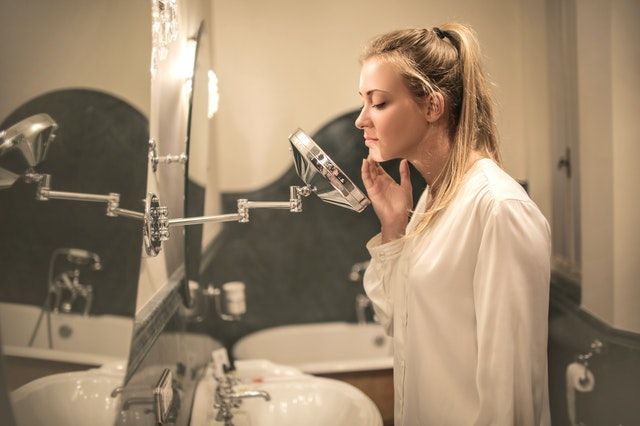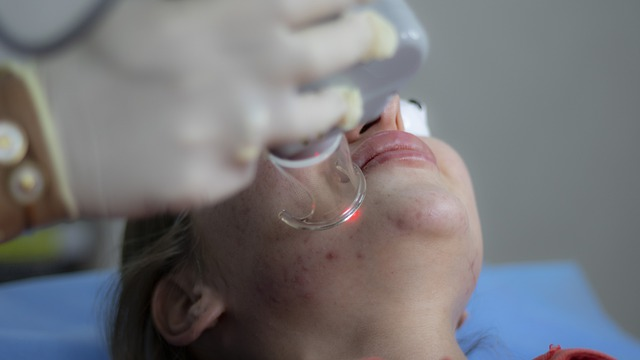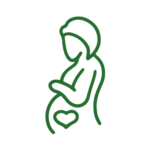What is the meaning of acne?
Acne, also known as Acne vulgaris, is an inflammatory skin condition that arises when hair follicles become clogged with dead skin, oil, dirt, etc. Acne appears generally on the face, neck, chest and back, and most commonly appears on the surface of the skin during puberty.
Shifts in the hormonal balance, addition of stress, lifestyle or diet changes, or medication can also induce acne such as whiteheads, blackheads, pimples, etc. While acne is a common skin condition, the treatment of acne should be driven immediately to avoid escalation.
A greasy appearance and pimples can be a preliminary sign on the skin, and the presence of bumps can also be indicators of acne issues. If you have acne, then getting a complete hormonal and toxicity test can help provide core reasons for acne development.
While the most common side effect of acne is itching and pus development, it is a serious condition should be treated with the right medication. Acne can also develop under the skin and it can cause irritation and lead to issues with skin quality.

What is the cause of acne development?
There are several reasons why acne can develop over time, which is why it is important to lower your risk factors and be mindful of emerging symptoms.
Excess production of sebum
Hormonal changes, stress, and dietary changes can cause the sebaceous glands to produce excess oil. This can lead to irritation of the skin, as well as congestion in the pores. Chronic excess production can lead to more painful acne bumps which would require medical treatment.
Bacteria or infection
The presence of bacteria in the pores can also lead to acne formation, caused by dust, dirt, pollution, etc. Topical creams and antibiotics would be required to treat acne caused by skin infections.
Dead skin accumulating in pores
This is a key reason why you may get acne on your face. It is important to regularly wash your face with a high quality face wash solution to reduce the accumulation of dead skin. Long-term presence of acne on the skin can cause scarring and other skin issues longer term.
Key symptoms of acne
While acne is visible on areas such as the face, back, and shoulders, it is important to understand all symptoms that can be attributed to the skin problem.
Whiteheads and blackheads are common symptoms of acne, which can appear largely on the face. They are present on the bridge of the nose, in the T-zone, and in the cheeks, and require topical ointments and derma treatments.
Smaller red bumps, called papules, can also emerge which can be signs of acne issues in the skin. They are a cause for concern if they regularly come and go, without significant changes in diet, lifestyle, and stress.
Pustules or pimple formation are also a significant sign of acne issues, that need to be addressed if they are larger in size. They may also be painful, in which case they require treatment in the form of antibiotics and laser combination.
Cystic lesions are a more severe form of acne that requires immediate medical attention. They can be painful to the touch, and may have a cyclical or permanent form on the skin. It is best to opt for treatment immediately when cysts are seen.

You should also be aware of the complications that can arise if symptoms are not managed effectively.
Scarring – Scarring can occur if acne is not resolved, with continuous emergence and bursting of pimples and whiteheads. Scarring can be more difficult to treat and is a severe complication of acne issues.
Pigmentation issues – Long-term challenges with skin management can lead to issues with hyper and hypo-pigmentation. The skin colour may appear darker or lighter depending on the type of pigmentation issue.
Chronic inflammation – Your skin texture may change over time, with constant issues with inflammation, quality, and different types of acne. It is best to consult with a specialist immediately before the issue escalates.
Risk factors that can cause acne
Hormonal changes
Changes in the hormonal makeup of an individual, especially during puberty, can cause acne to develop. This also includes the stress hormone cortisol that can trigger an acne response in the skin causing breakouts. The best approach is to get a hormone test performed as acne can be a key symptom.
Dust on the surface of the skin
Long-term exposure to dirt, dust, and pollution can cause acne as these elements can block pores on the surface of the skin. The presence of dust and dead skin cells can lead to the sebaceous glands not functioning properly.
Genetic predisposition
If you have a family history of acne and skin problems, then you may have a predisposition towards developing skin issues. It is best to consult with a dermatologist who can target the specific type of acne, such as whiteheads, blackheads, etc., and prescribe long-term treatment.
Bad diet & oily food
Oily food, along with a bad diet, can contribute to skin issues. Your body may be showing signs of itching and redness days after consuming oily food, which is why it is best to track your symptoms regularly.
The best strategy is to get tested for hormones, toxicity, deficiencies, and overall health with a home kit. You can target inherent reasons for the development of acne, while also improving lifestyle and dietary choices to improve your skin quality.
Key treatment strategies for acne
There are many strategies that you can opt for acne treatment, based on the severity of inflammation, complications, and duration of acne. You can consult with your doctor about the best way forward for your acne type and appropriate treatment option.
Topical creams
Topical creams available over the counter are one of the first treatment options for acne used worldwide. They target pores directly enabling them to shed dead skin and regenerate healthy skin development. They also help reduce oil production in active sebaceous glands.

Prescription based acne creams
You can opt for creams with Differin (adapalene), Retin-A (tretinoin), Retin-A Micro (tretinoin) and Avage (tazarotene) for optimal results. Prescription based solutions are recommended by specialists and should only be applied after consulting with a dermatologist.
Antibiotics
In the event of skin infections and bacteria, using antibiotics can help significantly. A combination of clindamycin and benzoyl peroxide may be prescribed to treat skin infection based acne. It is also an ideal solution for advanced acne development in the skin.
Laser light treatment
Laser light treatment can help deliver heat to scarred collagen under the skin to promote healthy skin development. Both laser resurfacing types, ablative and non-ablative, can be used to treat severe acne that is not being solved with topical creams.

Chemical peels
The top most layer of the skin can be chemically peeled to help the lower and healthier skin to emerge to the top. Chemical peels may be an ideal solution for you if you haven’t responded positively to topical creams and need faster results. This may be a short term solution and is used widely for face acne.
Lifestyle and dietary changes to reduce acne
Key lifestyle and dietary changes can help reduce acne, improve skin quality, and ensure that your pores are free of bacteria and inflammation.
Using gentler skincare solutions
From face washes to moisturizers, it is important to select oil-free and chemical-free options that are gentler for the skin. Face products that are all natural and mild can help eliminate dirt from the skin.
Opting for high quality cosmetics
Acne developed through poor quality cosmetics can appear as small bumps that are reddish and sensitive to the touch. It is important to opt for high quality cosmetic products that you can wash away each night without residue that can block pores.
Following an effective hygiene routine
Hygiene is key when it comes to acne reduction. Following a timely bathing routine is important, along with a regular face wash routine after coming back home. It is also essential to use clean wash cloths that are washed regularly as well.

Img src – https://www.pexels.com/photo/set-of-skin-care-products-in-contemporary-bathroom-4239013/
Covering face when exposed to pollution
When riding a bike or when walking through dusty zones, it is ideal to wear a mask or to cover the face with a clean scarf. This will help reduce our exposure to dust and air particles, which may settle on our skin causing acne.
Limiting exposure to direct sunlight
Extended exposure to direct sun can cause us to sweat for longer periods. We may ultimately bathe later in the day or the next day, which means that the sweat settles on our pores for a long time.
Improving hydration through water
Drinking adequate water when thirsty is the key to improve timely waste removal. Skin health is directly integrated with hydration, which is why substituting waster for alternative drinks may impact our skin quality.

Img src – https://unsplash.com/photos/PcU17evKnew
Avoiding friction-based irritation
Common friction based activities, such as direct contact with phone, wearing old masks, or tight backpacks, can increase our risk of developing acne on the face and back. Reducing contact based friction can help significantly.
Improving nutritional choices for diet
You can incorporate foods that are highly nutritious and healthy, to ensure minimal impact on skin health. The risk of pore blockages due to sebaceous gland activity is lower, which helps in reducing risk of irritation, redness, etc.
Avoiding excessive processed food
Foods that are highly processed, oily, and difficult to digest effectively can cause acne symptoms in the short term. Carbonated drinks, high starch foods, and high-salt options can also lead to acne development.
Improving washing and cleaning routine
Improving the cleanliness of your room, bed, tables, and other areas that you may be directly in contact with can lower your exposure to dust. Incorporating a daily routine of cleaning, washing, and eliminating dust can help your skin breathe better.






































































